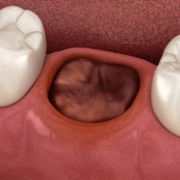What is a Dry Socket?
Dry socket or alveolar osteitis is a complication that occurs after extraction of a tooth due to compromised healing of the extraction wound and is characterized by extreme discomfort or pain in the area which has the socket. It occurs as a result of failure to form or disruption of the formation of a clot in the socket after the tooth is removed. The formation of a clot precedes proper healing and eventual closure of the socket and when it is annihilated too early, the nerves at the bottom of the socket are exposed which results in a painful sensation.
Signs and symptoms of a dry socket
Alveolar osteitis occurs 5-7 days after an extraction was done. It takes on one or all of the following symptoms.
- It has symptomatic pain which is spontaneous, relentless, and may radiate to the temples, the mandible, or frontal region.
- It may be accompanied by headaches, swelling, and fever.
- The extraction socket appears empty but can sometimes have a yellowish deposit which when accompanied by pain is a cause for worry but is otherwise part of the healing process.
- Pain post-extraction is a normal occurrence but if it exponentially increases with time, this could be indicative of a dry socket.
- Visible bone in the socket
- Bad breath or a foul odor coming from your mouth
- Unpleasant taste in your mouth
Risk factors for developing a dry socket
How well we practice the post-extraction instructions determines if we will get dry sockets but is not the only factor involved. The socket being on the lower jaw, history of having a dry socket, being on oral contraceptives, multiple extractions, and so on are other contributory factors that could lead to one experiencing alveolar osteitis. The post-extraction instructions will be delineated in the upcoming blog so stay tuned for those.
Treatment of dry socket
This condition can only be managed effectively by a dentist and preferably the one who carried out the extraction. They will debride the socket, clean it and put a dressing. They will also prescribe you antibiotics and pain killers which will aid in symptom relief and faster healing. After dressing a dry socket, you must not rinse your mouth for 24 hours, and after, you should do light rinsing in order to allow the clot to stay in place.
However, in case you cannot see a dentist, you can take over-the-counter medications for the pain and also do warm saline rinses gently in order to get some symptomatic relief. It is imperative that this condition is managed early and appropriately to prevent escalations to more dire conditions which can be fatal.

